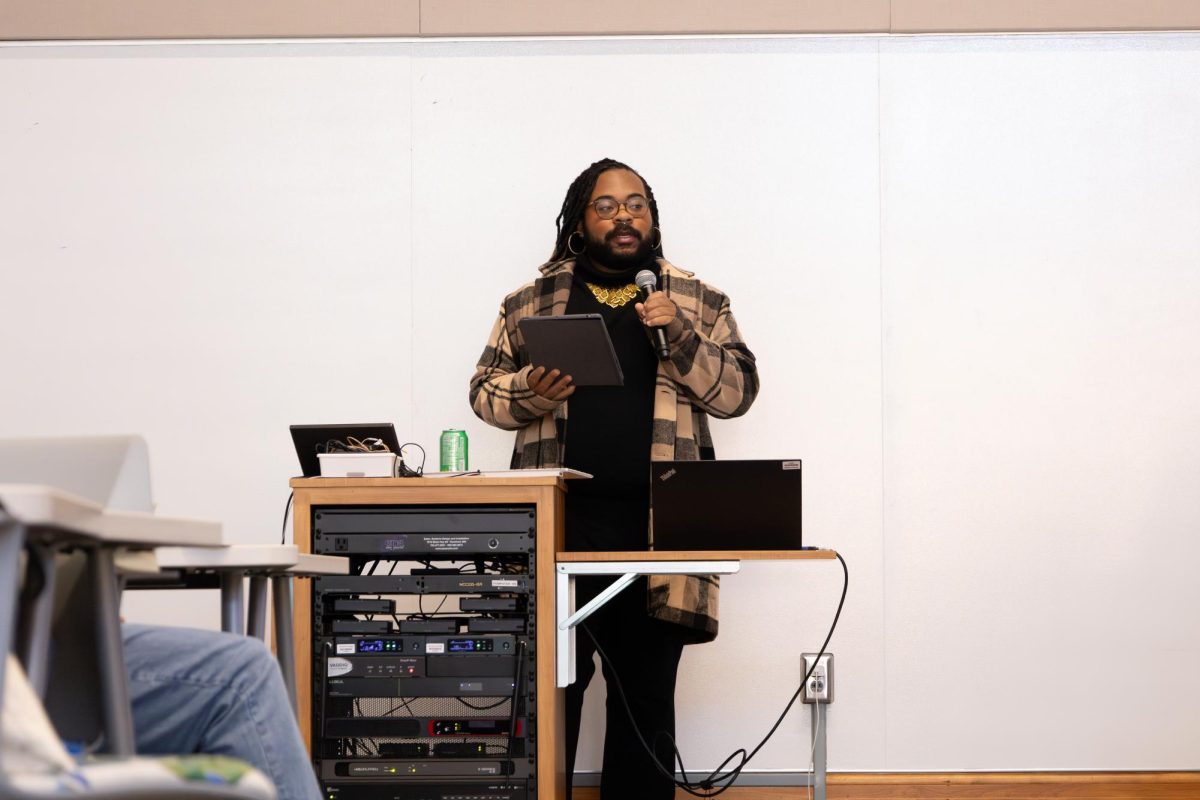“I think that the only real way we can think about the Earth and our human relationship to the Earth,” said Professor of Environmental Studies Colleen Carpenter, “is in an interdisciplinary manner.”
This term, Carls will have the opportunity to approach a truly global issue — water activism — through a uniquely interdisciplinary lens at “Wellsprings: Conversations Celebrating Water, Justice, and Art,” a cross-departmental, cross-institutional cascade of environmentalist art and discussion set to make waves starting Jan. 15 in the Boliou Hall Gallery.
“Wellsprings” was precipitated by a chance encounter between Carpenter and Assistant Professor of Art Jade Hoyer ’07.
“Like many good collaborations, it started over food and drinks,” Hoyer said.
A former professor of theology, Carpenter’s studies of the relationship between environment and religion led her to begin her Carleton career teaching Arts and Environmental Justice.
“As a student . . . that would’ve been my dream class to engage in,” Hoyer said. “It seemed like a natural fit for us to be in dialogue with one another . . . in the land of 10,000 lakes, reflecting on water usage could offer another commonality between our classes.”
The exhibition portion of “Wellsprings” will flow from inside and outside Carleton. The majority of works come from the Justseeds Artists’ Collective, a decentralized network of North American printmakers dedicated to “the transformative power of personal expression in concert with collective action.” However, visitors to Boliou Hall can expect to see plenty of pieces from Hoyer’s students, who have been studying Justseeds’ works, as well as contributions from Los Angeles-based printmaker Sarita Zaleha.
“[Zaleha is] not a portrait artist who is making an enjoyable sojourn into activism in particular being used for poster art, which often overlaps with social or environmental issues,” said Hoyer. “The nature of the print is that you’re using a multiple. When I make a drawing, I have a single drawing, but when I make a print, I can have a hundred of them, which makes each individual work potentially distributable . . . And so printmaking has always been thought of as a populist medium. It’s sort of the original version of graphic design.”
“Wellsprings” will bring this spirit into high tide on Feb. 8 with a panel discussion “exploring the intersection of art and environmental ethics.” The participants include voices from the broader artistic and scientific spheres — Zaleha will be there, as well as freshwater biologist Paula Furey — alongside those involved in more local causes, such as members of Northfield’s own Clean River Partners Association. Carpenter is particularly excited to welcome Ojibwe water walker Sharon Day, whose tradition emphasizes “women’s relationship with water and . . . the care of the earth.”
“We wanted to bring people from different ways of engagement with water . . . the idea of ‘water protectors’ has come up especially in terms of protests against pipelines, [such as] in Minnesota with the Line Three Pipeline,” Carpenter said.
Above all, “Wellsprings” is meant to exemplify Carleton’s interdisciplinary philosophy. Its facilitators — the panelists; the students; and Zaleha, who has a background in engineering — all, of course, represent vastly diverse fields of expertise. “Academics are often head-centered and [all] about knowledge,” Carpenter contends, which yields “not nearly enough about feeling or about our bodies . . . art enables us to interact with the things around us in a way that involves more of our being.” However, to Hoyer, art also reflects knowledge: “[We] do not make art about art about art . . . the stories we tell, the themes we choose to emphasize in our work, the notions of ourselves that we are exploring . . . that’s interdisciplinary.” As Carpenter puts it, “water is something that we need to live, that we understand scientifically, that is incredibly important economically, that has huge religious significance . . . it brings everything.” The duo hopes, then, that visitors to the exhibition will be able to gain a “recognition of finding themselves . . . as learners . . . and witness things they would be excited about” through the visit.
Carpenter hopes the exhibition will make environmentalism less murky.
“We’ve done a lot of work scaring people to death, showing the data and trying to give people a picture of the terrible things . . . happening with the earth right now, Carpenter said.” “But, actually, joy and inspiration and beauty are key, as far as I can tell, to moving forward with the larger ecological crisis. For anybody who’s thinking about the ecological challenges we face, having the chance to encounter them [that way] makes a huge difference.”
“Wellsprings: Conversations Celebrating Water, Justice, and Art” will be on display in Boliou Hall from Jan. 15 to March 1 with an opening ceremony and following panel discussion at 4 p.m. on Feb. 8.










